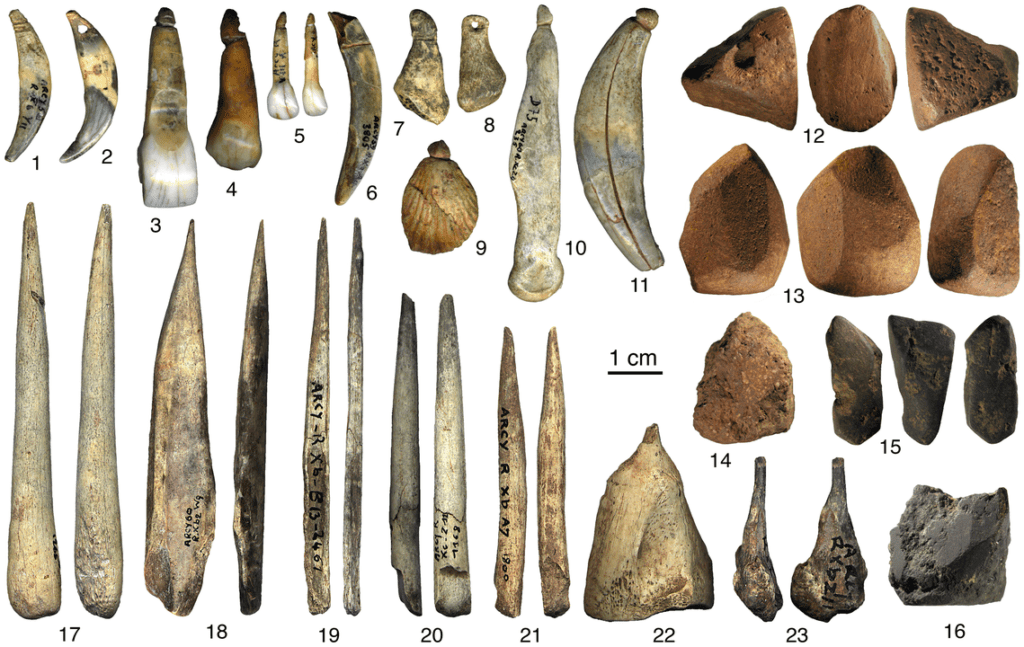Despite the prevailing theory that modern humans replaced Neanderthals everywhere, new research shows that in some parts of Europe, several groups of Neanderthals replaced each other, before finally being driven extinct by Homo sapiens.

Researchers at the Archaeological Museum of Bilbao, Spain report in a new study that Neanderthal populations in the Iberian Peninsula (today’s Spain and Portugal) were going through local extinction and replacement before modern humans even set foot in the region. The findings are based on the analysis of ancient, advanced stone tools belonging to a style known as the Châtelperronian tool complex.
The former new people
“Neandertals with Châtelperronian technology occupied the Northern Iberian Peninsula circa 43,000 years ago. This territory was unoccupied at the time, following the earlier disappearance of local Neandertal groups, along with their Mousterian technology,” the authors explain in their study.
Neanderthals as a group disappeared around 40,000 years ago, to the best of our archeological evidence. Exactly why this happened is still a mystery — Neanderthals seem to have been larger, stronger, and more resilient than our ancestors, while not lacking in dexterity or capacity for advanced thought. Ancient climate change and the unique ecological challenges this brought about may have caused the downfall of the Neanderthals, but many details remain unknown.
In an effort to help fill out our understanding of this process, the team examined the distribution of the Châtelperronian tool complex — which is believed to be unique to certain populations of Neanderthals in France and Spain — in the Iberian Peninsula. They hoped to better understand how Neanderthal populations had been changing during their last millennia in Europe, to give us some clues into how and why they disappeared.
The team examined over 5,000 examples of Châtelperronian tools from a site known as Aranbaltza II near the Spanish town of Barrika, in the Northern Iberian Peninsula. These were compared with tools recovered from other nearby Neanderthal sites.
In the conclusion of their analysis, the team explains that Châtelperronian tools do not overlap in time with older Neanderthal technologies in this region. The emergence of these tools is also earlier than the first known occurrence of Homo sapiens in the region. All this suggests that they were not an evolution of pre-existing Iberian tools, but were likely developed somewhere else and brought here by migrating groups of Neanderthals.
The team’s hypothesis is that the older Neanderthal populations in the Iberian Peninsula disappeared for some reason, and with them, the tool style they were using. This cleared the space for different groups of Neanderthals — ones using Châtelperronian tools — to move in, likely from modern-day France. In turn, these groups would later be replaced by our ancestors.
The paper “The intrusive nature of the Châtelperronian in the Iberian Peninsula” has been published in the journal PLoS ONE.






